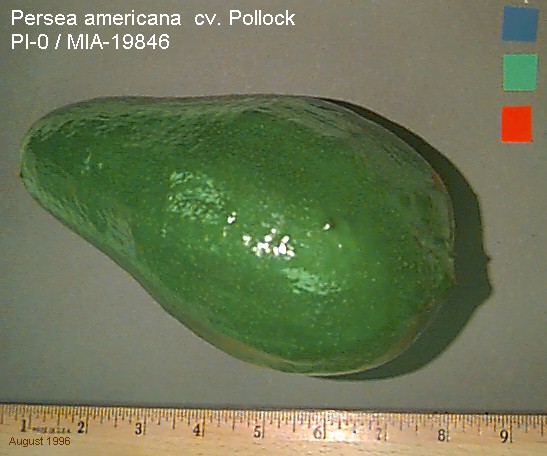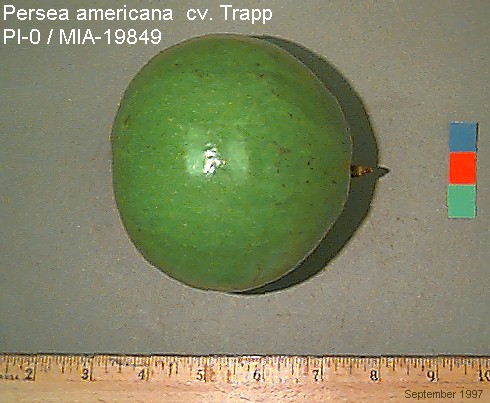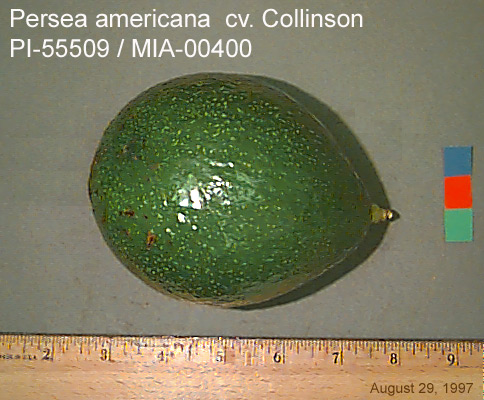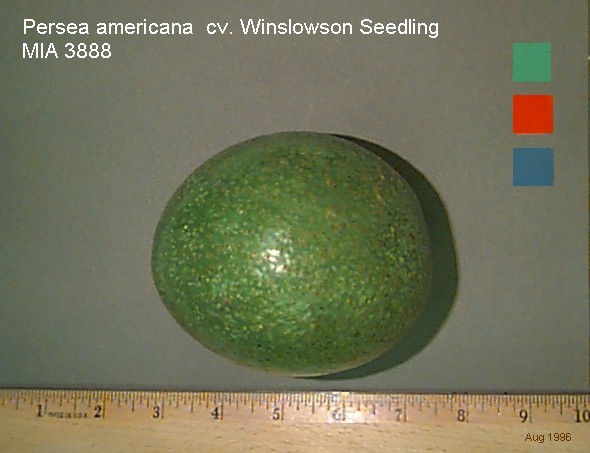Resumen
El area geográfica en donde el aguacate originó, que incluye desde México, Guatemala y probablemente hasta la costa Pacífica de Centroamérica, abarca una gran diversidad de ambientes ecológicos. Por ello, las tres razas que dieron orígen a los cultivares modernos de aguacate, la antillana, la guatemalteca y la mexicana, muestran adaptación a condiciones ambientales muy distintas. Los que parecen híbridos entre las razas mexicana y guatemalteca originados cerca de Atlixco en el estado de Puebla ('Fuerte', por ejemplo) han mostrado una adaptación sobresaliente a los microclimas subtropicales de tipo Mediterráneo en California. Esto permitió el desarrollo de una industria comercial que después fue trasladada a otras partes del mundo de clima semejante, como Sudáfrica, Israel y Chile. La selección del material de México y Guatemala permitió el desarrollo de cultivares comerciales, como por ejemplo 'Hass', 'Fuerte' y 'Reed', que ya constituyen una mayoría de los aguacates sembrados en el mundo. Los aguacates guatemaltecos tienen adaptación a condiciones elevadas, producen bien bajo condiciones frescas y son un componente importante del alimento de la región. La raza antillana produce bien en los trópicos bajos y en regiones cálidas y subtropicales como el sur de Florida. Cuando aguacates de raza guatemalteca y antillana fueron sembrados juntos en Florida a principios de este siglo, se produjo un grupo de cultivares nuevos cuya calidad resultó superior a la de la mayoría de los cultivares de raza antillana. Estos cultivares tienen buena adaptación a localidades cerca del nivel del mar, y un tiempo extendido de producción, lo que permitió a Florida colocar fruta en el mercado durante el otoño e invierno, más tarde que anterior- mente. Los mejores de éstos, 'Booth 7', 'Booth 8', 'Lula', 'Choquette' y otros más se han trasladado a regiones cálidas tropicales para su cultivo comercial. Así, la selección del germoplasma traído de México y Centroamérica ha producido un grupo de cultivares que son de gran importancia en el comercio mundial.
Florida Agricultural Experiment Station Journal Series N-01746
Geographic Origin of Avocado
The avocado, Persea americana Miller, apparently originated in a broad geographic area stretching from the eastern and central highlands of Mexico through Guatemala to the Pacific coast of Central America (Smith 1966 and 1969, Popenoe 1927). The Antillean (also called West Indian) race of avocado is believed to have come into being on the western coast of Costa Rica (Ben Ya'acov, pers. comm.).
Differentiation of the 3 Horticultural Races
Horticulturists recognized three well-differentiated races, Mexican, Guatemalan and Antillean (=West Indian) based upon morphology and their climatic adaptations some 80 years ago, but the differences had first been noted and recorded in the 17th century by Fray Bernabe Cobo in his Historia del Nuevo Mundo, written in 1653 (Popenoe 1934).
Origin of the Atlixco Population and Importation of Fruit to California
Avocados have been utilized and selected in what is now Puebla State of Mexico for some 9,000 years (Smith 1966 & 1969). The first material involved was of the Mexican race native to the area, but in the Valley of Atlixco in Puebla State, seedling avocado trees of the Mexican and Guatemalan race have long been found, as well as apparent inter-racial hybrids such as the original tree of 'Fuerte'. During the years from 1890 until 1911, when the Revolution interrupted commerce, avocado fruit from the Atlixco area was sent to California to be marketed in Los Angeles. Seeds from this group were planted in considerable quantities about southern California, so genes from Atlixco were well represented in the early cultivars selected for asexual propagation when this became common. (Popenoe, 1926)
Selection of Cultivars from imported Atlixco Material in California and Fuerte's subsequent Importance to California and the world
In 1911, Fred Popenoe, a nurseryman of Altadena, California underwrote a trip to Mexico by Carl Schmidt, whose objective was to collect budwood of superior avocado seedlings growing in the vicinity of Atlixco, in Puebla State. Avocados in Atlixco at that time were grown from seed, but propagation by budding had recently become a standard practice in California, making it possible to select and propagate named cultivars from exceptional seedlings. One of the seedlings Carl Schmidt collected in Atlixco, Number 15, named 'Fuerte' because of its strong growth in the nursery, has subsequently had tremendous impact on the world avocado industry (Popenoe, 1926). By 1947 'Fuerte' was the leading commercial cultivar in present-day Israel (Oppenheimer, 1947), and by 1957, 60 percent of the avocado plantings in South Africa were of 'Fuerte' (Malan, 1957). 'Fuerte' has now been displaced in most areas that have a Mediterranean-type climate by 'Hass', and other adapted cultivars that are more dependably productive than is 'Fuerte', but for many years it led the world in commercial production.
Ecological adaptations of Atlixco Avocados
Atlixco is situated about 1,875 M above sea level and has an average rainfall of about 80 cm during the season from May to October. The average mean annual temperature is about 12.5°C with a maximum of 32° C and a minimum of 2° C. (Shamel, 1936; Mosiño A. and García, 1974) Average mean temperatures available for two California sites are higher than that for Atlixco: 18°C for Los Angeles and 17.2°C for San Diego, but the extreme minimum temperature recorded at both the California cities, -2°C, is considerably lower than the mean minimum for Atlixco (Court, 1974). The fact that a commercial industry was built in southern California with germplasm brought for the most part from Puebla State indicates that this material has the capacity to tolerate occasional freezing weather, if this is of short duration. Additional evidence of its cold tolerance is provided by success of the cultivars from California when they were introduced into Palestine, which is now Israel (Oppenheimer, 1947).
Origin of Florida's Antillean Population
The first English-speaking settlers to arrive in the Miami area of south Florida in 1850 found Antillean avocado seedlings naturalized in the hardwood vegetation (hammocks) of the area. The origin of these trees is not known but it is reasonable to believe they were introduced from Cuba during the Spanish occupation of Florida, which ended in 1819 with the purchase of Florida from Spain by the United States. (Antillean avocados growing at St. Augustine to the north of Miami, killed by the severe winter weather of 1835, were presumably of the same origin.) (Wolfe et al., 1949)
Development of Asexually Propagated Cultivars in Florida and their Relationship to Development of the Avocado Industry in Florida
Early in the 20th century George Cellon, a nurseryman of Miami, devised the first known method for propagating avocados asexually by budding (Anonymous, 1946). This method was later replaced in Florida by grafting, but it is still employed in California and other areas of commercial production. Superior Antillean seedlings of local origin were selected by Cellon as the first named cultivars and two of these, 'Pollock' and 'Trapp' are still classified as commercial varieties in south Florida (Fla. Avocado Administrative Committee, 1999).

Persea americana 'Pollock' |

Persea americana 'Trapp' |
Ecological Adaptations of Cuba's and Florida's Antillean Avocados
The climate of the part of Florida where Antillean Avocados have long been grown is classified as Humid Semi-hot Semi-tropical, 4.45 by Papadakis' (1966) classification. Climates in Cuba, where the Antillean avocado is widely distributed, are classified by Papadakis as Humid Semi-hot Tropical (Habana) or Moist Monsoon with 4-5 dry months (Cienfuegos). The annual mean temperature in Cuba is 25.5° C, with a mean for January of 22.5º C and a mean for August of 27.8ºC, and freezing weather never occurring (Inst. Econ., 1974). The main difference between south Florida's climate and the conditions common in Cuba is that freezing weather occasionally occurs in Florida (a minimum of 0°C at Miami in February of some years) but this rarely damages the trees because freezes are usually of short duration. The annual mean temperature at Miami is 23.9°C, with a mean in January of 19.4°C and a mean in August of 27.9°C (Court, 1974). In these conditions trees of the Antillean race grow well, and thus it was possible to establish an industry based on cultivars of this race.
Introduction of Guatemalan Avocados to Florida and their Evaluation
The first Guatemalan avocados 'Colla', 'Collins' and 'Winslow', were introduced into Florida in 1906 (Fairchild, 1939). Their ecological adaptations were quite different from those of the Antillean cultivars that had been selected from Cuban importations. Climates prevailing in the Guatemalan highlands have been classified as "humid tierra templada," suitable for arabica coffee, maize and rice, subdivided into moist monsoon with 4 (or less) dry months, or ever humid (Papadakis, 1966). Genotypes of avocado that thrive under these conditions would be expected to undergo some stress when moved to warm, lowland climates such as those normal in Cuba and southern Florida. The base of the Guatemalan race is made up of a group termed the "Guatemalan Criollos" by Schieber and Zentmyer (1980) which grows in Guatemala and parts of Mexico and El Salvador at elevations from 1500 to 2400 meters (m) and in some cases as high as 2600 m. Plants at the last-named elevation are subject to frost in winter, and all Guatemalan trees grow best at cooler temperatures than those preferred by trees of Antillean race. Guatemalan avocados brought to Florida survived but in most cases did not thrive, apparently because of Florida's year-round warm temperatures. Only one Guatemalan cultivar, 'Taylor', has persisted to the present as a minor commercial variety in Florida.
Origin of Guatemalan-Antillean Hybrid Cultivars
The first Guatemalan-Antillean hybrids to be recorded originated at the U. S. Department of Agriculture (USDA) Plant Introduction Garden at Miami and were seedlings of 'Colla', 'Collins' and 'Winslow' each pollinated by an Antillean parent, and were named 'Collason', 'Collinson' and 'Winslowson' (Fairchild, 1939). They constituted a new type of avocado on the face of the earth, and were of immediate interest because they combined enhanced fruit quality from the Guatemalan parent with adaptation to warm lowland conditions derived from the Antillean parent. Furthermore, their fruit matured at a later season than did Antillean cultivars, opening the autumn and winter markets to Florida fruit. 'Collinson' bears an attractive fruit that unfortunately has some marketing defects, namely shy bearing under some conditions, sensitivity to low storage temperatures and a tendency for the seed to germinate while still in the fruit nevertheless it continues to be a minor commercial cultivar in Florida. The Guatemalan-Antillean hybrid cultivars that have achieved greatest commercial success, however, resulted from the collaboration of a resident of Homestead named Will Booth with W. J. and Isabelle Krome, proprietors of a nursery in southern Dade County, Florida. The Kromes had an experimental planting of mixed cultivars and selections of both races. In 1920, Will Booth planted seeds of Guatemalan cultivars from the Krome planting and grew them to fruiting age, at which time their hybrid origin became evident (W. H. Krome, pers. comm.). The tree designated 'Booth 2' first fruited in 1927, as did others in the numbered series of Booth cultivars. Booth seedlings 1, 3, 5, 7 and 8 were propagated commercially in 1935 (Wolfe et al., 1949). They appeared on the scene when Florida was experiencing severe competition from Cuba in marketing its Antillean cultivars, which matured in summer and early autumn (Brooks, 1929). The Guatemalan-Antillean hybrids growing in Florida matured fruit in autumn and winter, at a time when Cuba did not have fruit available to market, and thus Florida's avocado industry survived through growing these new cultivars. When trade between Cuba and the U.S.A. was interrupted in the early 1960s, production of Antillean cultivars again became important in Florida, as production of hybrid cultivars continues to be.

Persea americana 'Collinson' |

Persea americana 'Winslowson' |